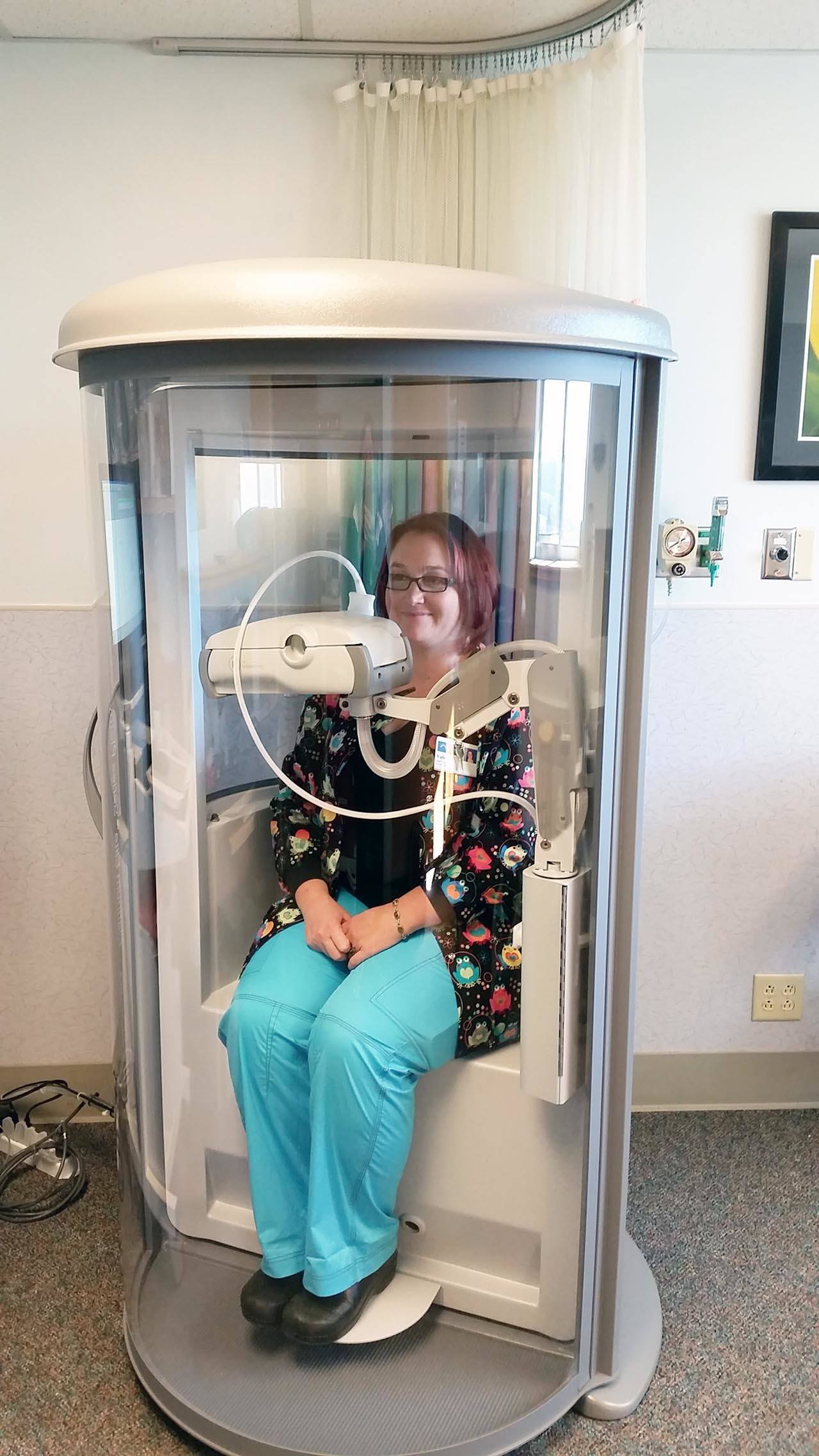The new lung testing machine at Grays Harbor Community Hospital may look like an isolation tube on the set of a 1950s game show, but it provides potentially life-saving information about the people who venture inside and use it.
Called a diagnostic body plethysmograph, it’s located in the hospital’s cardiopulmonary department for lung testing, patients with asthma, chronic lung disease, lung or other cancers, and for health checks before surgery.
“It’s used by people of all ages,” said Valerie Norwood, the hospital’s cardiopulmonary supervisor. “People with allergies, emphysema, Chronic Obstructive Pulmonary Disease — even teenagers with exercise-induced asthma.”
Norwood said the tests performed with the machine provide many answers that help diagnose a person’s condition. However, the testing can take up to 90 minutes, and the person needs to provide all the effort they can muster for the results to be accurate.
Some of the patients have difficulties and need to be able to cough or drink some warm or cold liquid during the testing so they can continue the process to the end.
“One of our biggest jobs is to help them overcome their fear,” Norwood explained. “They can come in very nervous and scared. We help them understand what they are going to do.”
Children sometimes need to take these types of tests. The machine can be adjusted to accommodate their size but the process can be hard for youths because it requires a long time in which they have to follow directions.
The older version of this machine was smaller and for some it could be “claustrophobic,” Norwood said.
Images on the machine’s adjacent computer screen make it easier for children to be tested than it was when using the older model because they can easily see what’s going on outside of it because from the inside of the tube-shaped machine the view is clear like a window.
“One on-screen image has a birthday cake with candles on it and another has a balloon that expands,” Norwood said. “These images help the child know how their doing.”
The machine can be adjusted for people with mobility problems, too. The seat is at the same level as a wheelchair.
The hospital intends to eventually increase the hours of operation for this machine from two days to four days a week. They currently conduct less than 500 of these tests each year, and chronic patients take these tests annually.
“We can only serve a percentage of the population each year,” she said.
The lung testing isn’t done exclusively on people with apparent health problems. It’s also used to screen workers to ensure they have no problems working in certain heavy industries. Potential fire fighters also require lung testing.
“But some tests are for more fun reasons — people who want to scuba dive,” Norwood said.
Before the hospital invested in its first plethysmograph six years ago, it used a spirometer, which measures the air capacity of one’s lungs.
“Some doctor’s offices have spirometers and use them to see if a patient needs to come here for full testing,” she noted.




